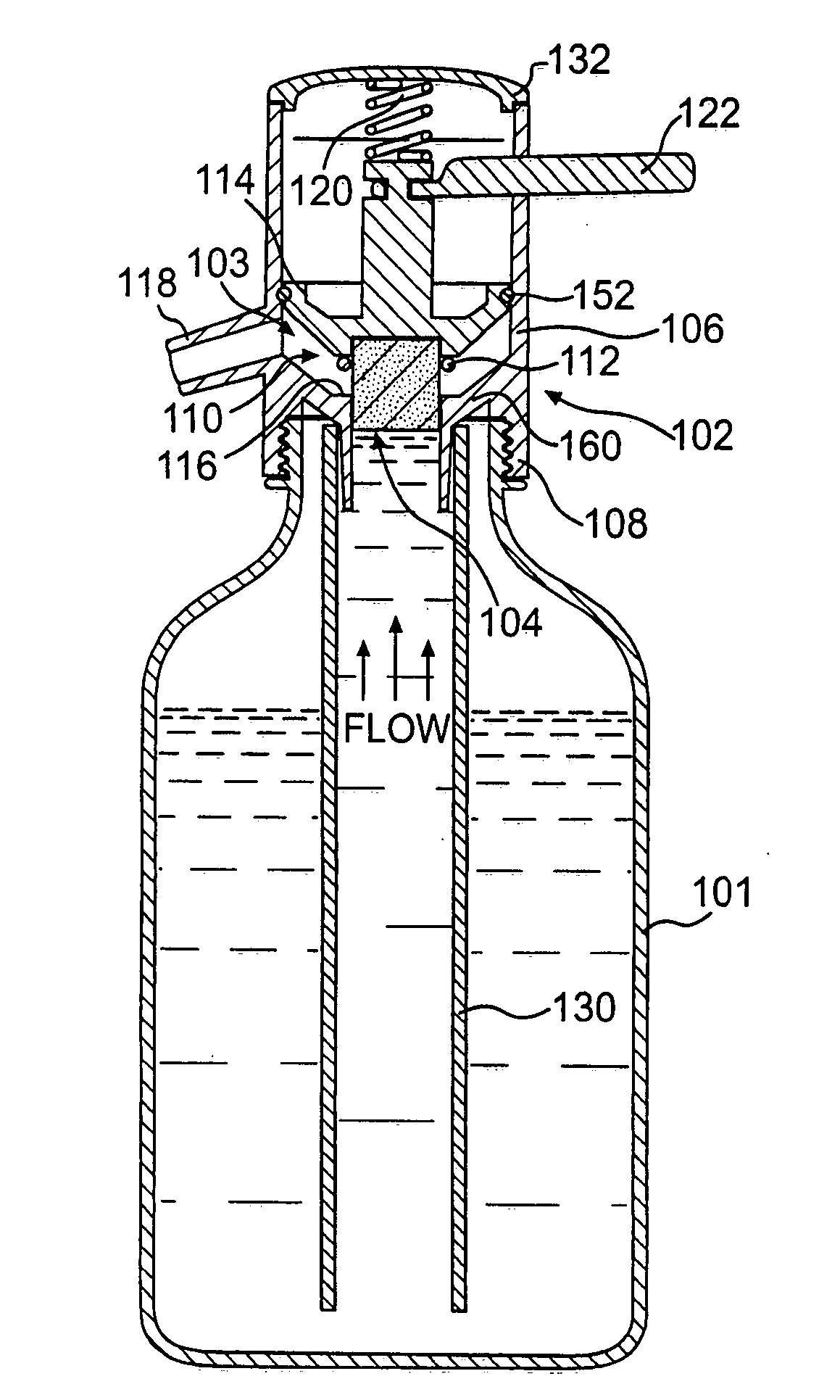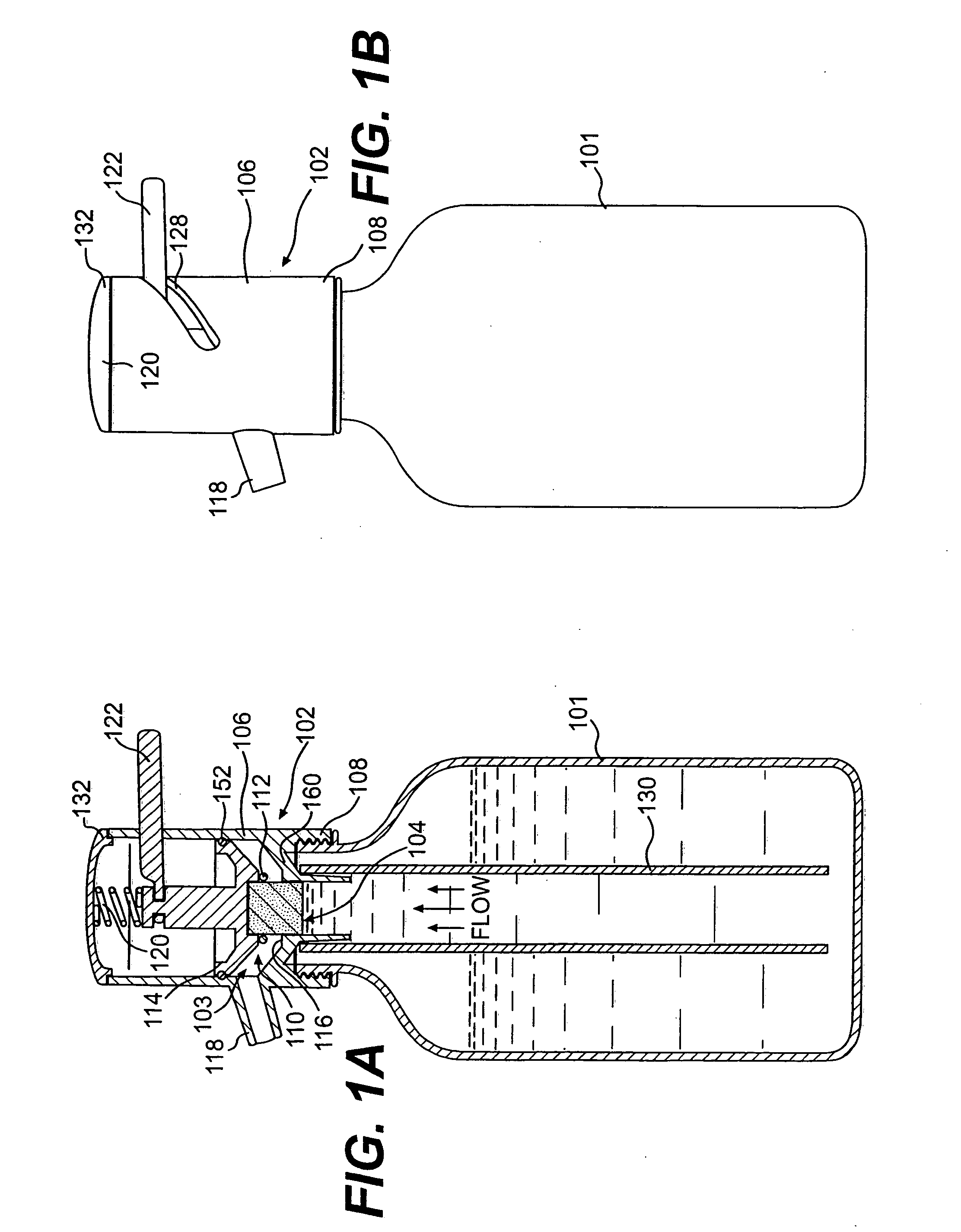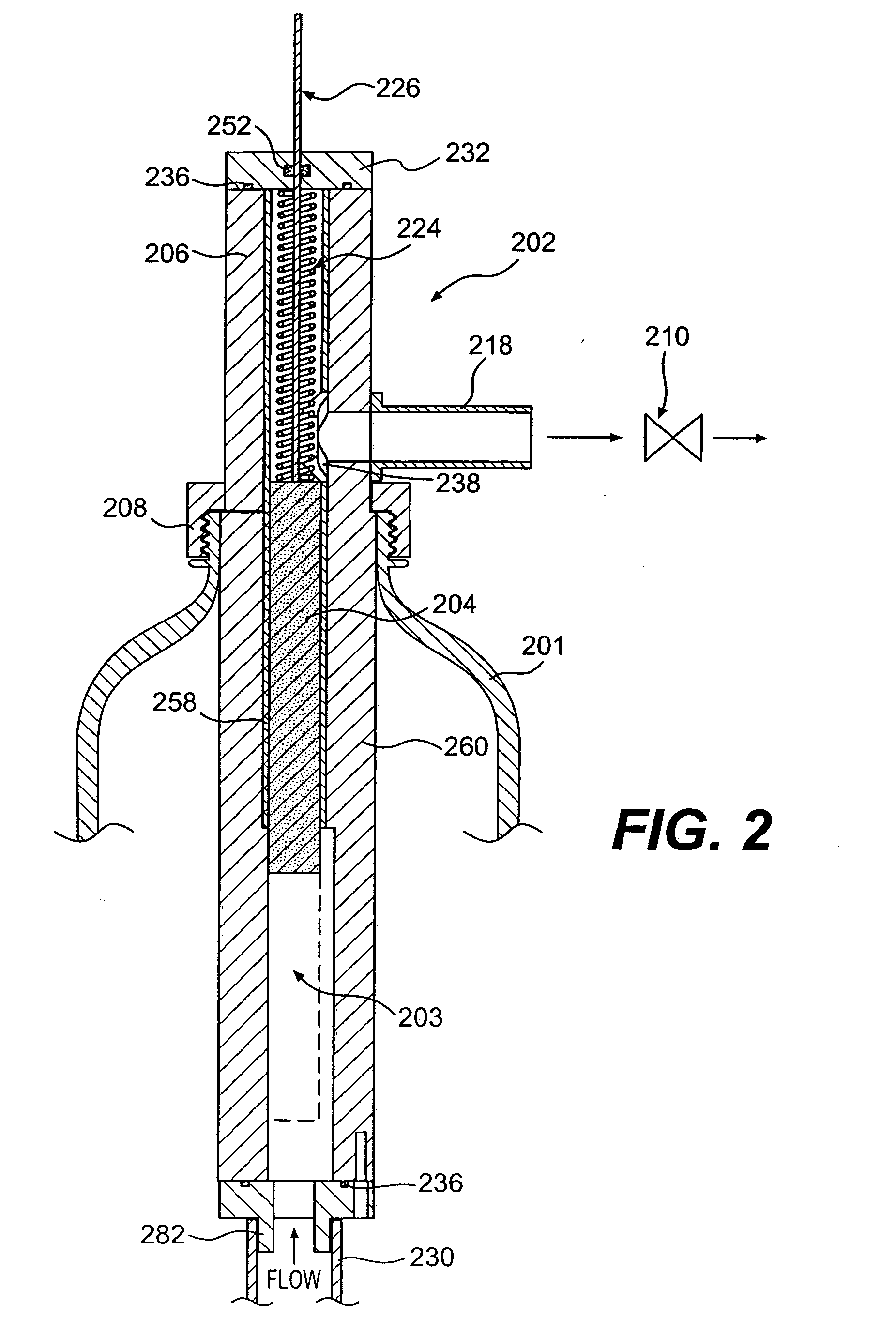Dispenser assembly having a porous flow control member
a technology of flow control and dispensing device, which is applied in the direction of liquid dispensing, liquid transferring device, packaging, etc., can solve the problems of difficult control of seltzer bottles, affecting and affecting the convenience of bulk purchasing, so as to reduce waste and improve the economics of bulk purchasing
- Summary
- Abstract
- Description
- Claims
- Application Information
AI Technical Summary
Benefits of technology
Problems solved by technology
Method used
Image
Examples
first embodiment
[0047] In a first embodiment of the present invention, illustrated in FIGS. 1A and 1B, the dispenser assembly 102 generally comprises a substantially cylindrical housing 106 for attachment to a container 101, a dispenser body 160 defining a flow passage 103, a PFCM 104 disposed in the flow passage 103, a dip tube 130, a valve 110, and an actuator 122. The dispenser assembly 102 of the first embodiment is operated by a simple manual turn of the actuator 122, whereby a user can easily control the rate of dispensing the beverage by a single motion.
[0048] In this embodiment, the dispenser body 160 is formed integrally with the housing 106 of the dispenser assembly 102. A cap 132 is provided to enclose the working parts in the housing 106. The flow passage 103 is defined in the dispenser body 160 for flow of the beverage out of the container 101 during dispensing. A discharge spout 118 for directing the beverage once it has passed through the flow passage 103 is provided in the side of ...
second embodiment
[0053] The dispenser assembly 202 of the second embodiment of the invention functions on similar principles as the first embodiment, in that it uses the pressure contained in a beverage itself to propel the beverage from the container 201, and employs a PFCM 204 to vary the resistance to flow of a beverage during dispensing. However, in the second embodiment, the amount of resistance to flow of the beverage is adjusted automatically, rather than manually as in the first embodiment. That is, the user manually turns the dispenser assembly on and off, but does not have to control the rate at which the beverage is dispensed, this rate being adjusted automatically. As shown in FIG. 2, the dispenser assembly 202 generally comprises a substantially cylindrical housing 206, a dispenser body 260 defining a flow passage 203, a PFCM 204 disposed in the flow passage 203, a dip tube 230, and a valve 210.
[0054] As in the first embodiment, the dispenser body 260 is formed integrally with the subs...
third embodiment
[0059] The third embodiment, shown in FIG. 3, is a manually actuated dispenser assembly 302, similar in operation to the first embodiment in many respects. However, the third embodiment differs from the first embodiment at least in the arrangement of the dispenser body 360, actuator 322, valve 310, and attachment portion 308.
[0060] The dispenser assembly 302 of the third embodiment generally comprises a housing 306, a dispenser body 360 defining a flow passage 303, a PFCM 304 disposed in the flow passage 303, a dip tube 330, a valve 310, and an actuator 322. The dispenser assembly 302 of the third embodiment is operated by twisting the actuator 322, whereby a user can easily control the rate of dispensing the beverage by a single actuator.
[0061] In this embodiment, the dispenser body 360 can be formed separately from the dome-shaped housing 306. A flow passage 303 is defined in the dispenser body 360 for flow of the beverage out of the container 301 during dispensing. A discharge ...
PUM
 Login to View More
Login to View More Abstract
Description
Claims
Application Information
 Login to View More
Login to View More - R&D
- Intellectual Property
- Life Sciences
- Materials
- Tech Scout
- Unparalleled Data Quality
- Higher Quality Content
- 60% Fewer Hallucinations
Browse by: Latest US Patents, China's latest patents, Technical Efficacy Thesaurus, Application Domain, Technology Topic, Popular Technical Reports.
© 2025 PatSnap. All rights reserved.Legal|Privacy policy|Modern Slavery Act Transparency Statement|Sitemap|About US| Contact US: help@patsnap.com



